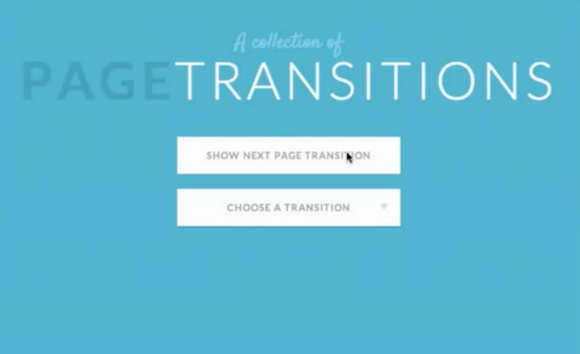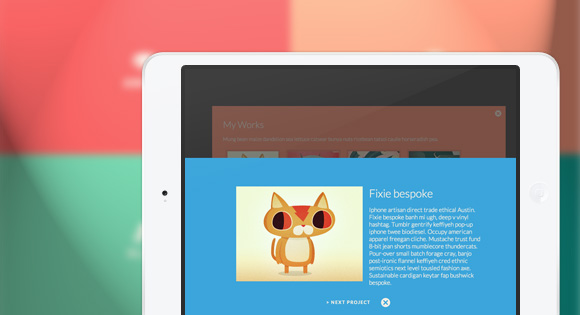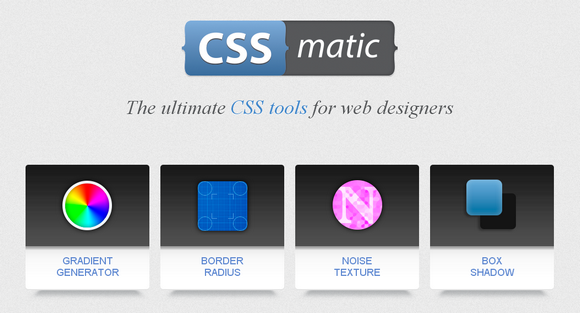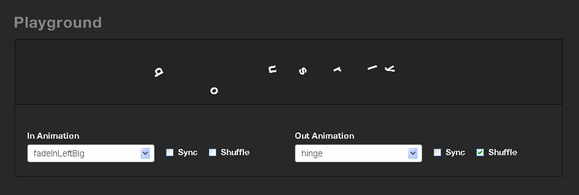Sticker.js is a javaScript library that allows you to create a Sticker Effect. There is no dependencies (jQuery not required). It works in most of major browsers that support CSS 3 (IE10+). It is licensed under MIT License.

Requirements: Javascript framework
Demo: http://stickerjs.cmiscm.com/
License: MIT License
Designing and developing UIs for the mobile web is tricky, but it’s extremely difficult to do that while delivering something that performs at 60fps. The best opportunities to getting jank-free transitions on phones/tablets are CSS transition and keyframe animation based, especially tapping into hardware-accelerated transforms and opacity changes.
Effeckt.css is a collection of  fantastic experiments and demos exploring CSS-based transitions. It provides very little UI of its own. It’s only hooks for transitions / animations. There is no hover on the mobile web, so any hover-based effects would be excluded or have a tap equivalent.

Requirements: JavaScript Framework
Demo: http://h5bp.github.io/Effeckt.css/dist/
License: MIT License
Simptip is a simple CSS tooltip made with Sass. You can have a tooltip in different directions (top, left, bottom, right). Secondly as you know color is an important factor. You can also have a Tooltip in different color such as success , info , warning and danger. And finally other features like (soft edge, half arrow, movable effect, fade effect, multiline tooltip). You can use these items either together or separately.

Requirements: Sass Framework
Demo: http://arashm.net/lab/simptip/
License: MIT License
InsertHTML has shared with us a little jQuery plugin for Creating CSS3 Animated Modal Windows in an Image Gallery. He has also included a bunch of built-in animations for the modal windows giving some pretty cool effects.
You can set the animation you wish to use for the modal boxes as they slide in. There are seven animations: slide, zoom, rotate, fall, fly, rotatepoint and goround. You can also set the length you wish the entire animation process to go on in seconds. Best of all, you can use this on any project you wish, at no cost.

Requirements: CSS3 & jQuery Framework
Demo: http://inserthtml.com/demos/javascript/block-slide/
License: License Free
Codrops has shared some Creative Button Styles for our inspirations. This button set consists of some simple, creative and subtle styles and effects to inspire you. The effects can be seen when hovering on some buttons and clicking on others. Mostly, CSS transitions are used but also CSS animations and for some buttons we use a bit of JavaScript to add/remove effect classes.

Requirements: CSS
Demo: http://tympanus.net/Development/CreativeButtons/
License: License Free
Codrops has shared Fullscreen Layout with Page Transitions with us. Initially, the layout shows four flexible boxes. When clicking on a box, it will expand to fullscreen and the others will scale down and fade out. When closing the current view, it will move back to the intial position while the other boxes come back up again.
Another type of page transition can be seen on the works section where we will show a portfolio item by sliding in a panel from the bottom. The current view gets scaled down and disappears in the back. All effects are done with CSS transitions and controled by applying classes with JavaScript. The whole layout is flexible and some media queries are added to size down things for smaller screens.

Requirements: JavaScript Framework
Demo: http://tympanus.net/Development/FullscreenLayoutPageTransitions/
License: License Free
Working with CSS in Web documents, we often find ourselves using the fundamental screen unit, the pixel—a square, nondivisible part of every display device (well, visual screens anyway) that distributes little sources of light in a regular, perpendicular grid.Because the majority of Web developers’ work focuses on creating pixel-perfect manifestations of designs delivered in pixel-based, noninteractive image formats, we tend to forget that the Web offers more than just pixel values for expressing lengths and sizes with CSS. This knowledge is fundamental for dealing with responsive Web design, where understanding how CSS length units work is crucial to correctly assigning sizes to objects and aligning elements on the page.
In this article, I’ll look at these units of measure and describe how they behave and apply to elements in documents. (Keep in mind that a fair bit of book typesetting is done in CSS as well, so it’s not just HTML documents we’re dealing with.)
Relative vs. Absolute Units
In terms of measurement, every length is expressed in relation to some basic unit. All measurement systems provide a standard set of units with which to compare and calibrate all other units and measurement devices.
Units (as far as CSS goes) can be absolute or relative, depending on whether their basic unit depends on the context within which it’s used. For computer displays, the basic unit is the pixel, to which all other units are recalculated when objects are finally rendered to the screen. Although the pixel is treated as a relative unit, it is nevertheless dependent on two parameters: the screen’s physical size and its resolution. I’ll cover how pixels relate to physical units later in the article.
Other units, such as percentages (denoted by the % symbol), are dependent on the context of their use. They can express a proportion of a container’s width or height or a proportion of the current font size or line height.
First, let’s cover absolute CSS units. Read the rest of this entry »
CSSmatic is a non-profit ultimate CSS tools for web designers. There are four useful tools at the moment. You can use the Gradient Generator which supports multiple colors and opacity stops to get amazing gradients. By using the gradient tool you can create gradients with smooth color changing effects and subtle transparencies.
Border Radius is super easy to use and a super time saver. Change all the borders selected at the same time. Noise Texture helps you create subtle background patterns with dirty pixels and noise, changing the color and values and previewing the results in real time. Box Shadow supports Blur radius changes, color changes, shadow size. Everything that you need to create great drop shadows in a single place.

Requirements: –
Demo: http://www.cssmatic.com/
License: License Free
Today’s front-end developers don’t just need to understand how to write CSS, we need to know how to write it efficiently. And what “efficiently†means can depend on your project and environment. Perhaps you have a team with several members working in the CSS and you need an efficient way to work together. Or maybe you have a huge enterprise site and you need your CSS optimized for speed. You could even be working with a legacy system that restricts access to HTML, which means you need efficient selectors to effectively style elements without ids or classes. You might even face all these situations and more.
Whatever your goals for CSS are, the best way to reach them is to know your options, and that means understanding all the selectors available to you. Most of us are already familiar with id and class selectors, and I introduced you to the beauty of attribute selectors in “Understanding CSS Selectors.†But there’s so much more.

In this two-part series, I’ll look at the new selectors in CSS3, starting with structural pseudo-classes.
What’s a Pseudo-Class?
CSS pseudo-classes target elements that can’t be targeted with combinators or simple selectors like id or class. You use pseudo-classes to select elements based on their attributes, states, and relative position. For example, you are probably already familiar with pseudo-classes for link states: Read the rest of this entry »
Textillate.js is a simple plugin for CSS3 text animations. Textillate.js combines some awesome libraries to provide an ease-to-use plugin for applying CSS3 animations to any text. Simply include textillate.js and it’s dependencies in your project to start creating unqiue effects.
Textillate.js is built on top of the simple, yet amazingly powerful animate.css and lettering.js libraries.

Requirements: jQuery Framework
Download Link: http://jschr.github.com/textillate/
License: MIT License












